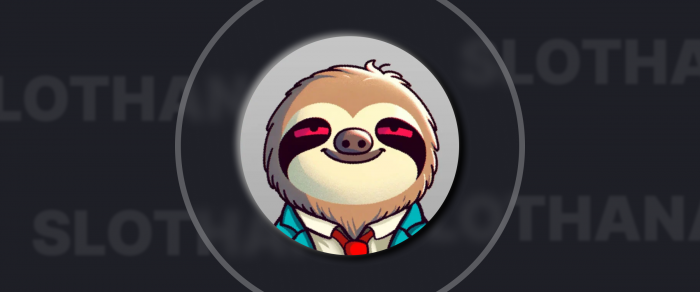13 High APY Crypto Tokens for Staking in 2024
The crypto market has been on the rise recently, attracting more and more investors looking to make a profit. While speculating on the coin prices is one way to earn, there’s another lucrative option that not many know about – staking – where token holders participate in the validation and verification of transactions on the blockchain and earn passive income.
But which coins are the best for staking in 2024? In this article, we’ll take a look at 14 high APY crypto tokens that are worth staking this new year.
Key Takeaways:
- Staking involves locking up assets for a period of time and carries risks such as inflation and volatility.
- APY stands for annual percentage yield and is used to determine potential returns from staking.
- Some high APY tokens for staking include DOT, ETH, SOL, INJ, ATOM, and some others.
Injective Protocol (INJ)
Built for finance, Injective is a layer-one blockchain that powers the next generation of decentralized finance (DeFi) applications. It offers powerful financial infrastructure primitives such as a fully decentralized on-chain order book and compatibility with multiple blockchains, including Ethereum and Solana.

With an impressive community of over 150,000 members and backing from prominent investors like Binance and Mark Cuban, Injective has been gaining popularity since its launch in 2019. Its native token, INJ, is used for governance and staking on the network, providing holders with a generous APY of over 20%. It holds a 29th position in terms of market cap among all cryptocurrencies.
There are several options for staking INJ tokens, including the popular Trust Wallet and the official staking platform, Injective Hub. Trust Wallet is a user-friendly multi-chain wallet that offers in-app staking. On the other hand, Injective Hub is the primary way to stake tokens, providing a seamless and secure staking experience directly on the Injective blockchain.
Market cap: $3.2 billion (#29)
Staking rewards: 15%-20% APY
Cosmos Hub (ATOM)
As one of the earliest and most established proof-of-stake networks, Cosmos Hub is a prime choice for staking for many investors. Its ecosystem aims to solve some of the biggest challenges faced by blockchain networks, such as scalability and interoperability. Its modular framework and Interblockchain Communication protocol allow developers to easily create decentralized apps (dApps) that communicate between different blockchain networks.

Launched in 2017, the network’s native token ATOM has a role in the network’s governance and allows investors an impressive APY of 15.4% for delegating to a staking pool. For those who prefer a more hands-on approach, operating a validator node can earn them one of the highest staking rewards of about 16.73% APY.
ATOM can be staked on popular exchanges like Coinbase, Kraken, and Binance. Users who prefer to stake their tokens on a secure wallet can earn passive income with Ledger Live.
Market cap: $4.5 billion (#20)
Staking rewards: 15.4% APY
Polkadot (DOT)
Polkadot, the layer-0 meta protocol, is well-known for its interoperable network that connects specialized blockchains, a concept known as sharding. With Polkadot, users can transfer any data or asset type across blockchains, which makes the project a key player in the decentralized web (Web3) movement.

Apart from its technology, what makes Polkadot an attractive staking option is its native token, DOT. As one of the leading crypto tokens by market cap, DOT has been performing exceptionally well over time. Staking DOT can provide APYs of up to 14%, depending on the staking provider.
Some popular options for staking this high APY crypto token include Binance, Coinbase, and Kraken. These exchanges offer a hassle-free staking experience for users while also supporting various other crypto activities.
Market cap: $10.9 billion (#11)
Staking rewards: 14% APY
Kusama (KSM)
Dubbed “Polkadot’s wild cousin,” Kusama is an experimental blockchain platform designed for developers to create massively interoperable and scalable applications. It shares a similar codebase with Polkadot, one of the most successful interoperable blockchains.

But what makes Kusama unique is that it serves as a testnet for fast-paced projects looking to deploy on a highly scalable and interoperable sharded network. This allows developers to test and innovate before launching their product on the Polkadot mainnet. Many projects choose to stay on Kusama even after deployment due to its low barrier of entry for deploying parachains, low bond requirements for validators, and flexibility for experimentation.
Currently, staking KSM tokens can earn you an APY of over 20%, making it a highly attractive option for staking in 2024. Popular exchanges like Kraken and Coinbase offer staking services for KSM tokens, providing users with easy access to earn passive staking income.
Market cap: $458 million (#124)
Staking rewards: 12.8%-20% APY
Zilliqa (ZIL)
Zilliqa is a public, permissionless blockchain that was designed to address the issue of scalability and speed in blockchain technology. It employs sharding as a second-layer scaling solution, allowing the network to process thousands of transactions per second.

Since its official launch in 2019, Zilliqa has become home to a number of dApps and has also introduced staking and yield farming. Holders of ZIL tokens can stake and earn a high APY, with current rates ranging from 12-17%, depending on the staking platform.
Among the popular crypto staking platforms for this high APY crypto are CEX.io and Binance, two well-known cryptocurrency exchanges that also offer staking services.
Market cap: $474 million (#120)
Staking rewards: 12.6%+ APY
Binance Coin (BNB)
Binance needs no introduction as it is the largest crypto exchange globally. Apart from providing a platform for trading various digital assets, Binance also offers Binance Coin (BNB), a utility token that can be used for discounted trading fees, staking, and more.

BNB has been steadily growing in popularity since its launch in 2017 and is currently the fourth-largest cryptocurrency by market cap. The coin started as an ERC-20 token before transitioning to its own blockchain, the BNB Smart Chain (BSC). According to the BSCscan data, the network processes an impressive 6 million transactions per day, making it a formidable competitor to Ethereum.
Staking BNB on the Binance platform provides users with a high APY of up to 8.69% for a 90-day lock-up period. Alternatively, users can also stake their BNB on external wallets that support the BEP-2 token standard, such as Trust Wallet. With a minimum staking amount of 0.1 BNB, it’s an accessible option for those looking to earn passive income in one of the top cryptocurrencies.
Market cap: $49.2 billion (#4)
Staking rewards: 8.6%-12.5% APY
Casper Network (CSPR)
Casper Network is the first-ever live proof-of-stake blockchain built off the Casper CBC specification. Launched on mainnet in March 2021, Casper aims to revolutionize blockchain technology by offering enterprise-grade security, scalability, and decentralization all within one protocol.

With its future-proof architecture, Casper can adapt to the evolving needs of its users and make blockchain technology more accessible to developers of all backgrounds. Its native token, CSPR, is used for staking and governance on the network, offering a high APY of over 9%.
To stake CSPR, individuals can use Uphold or stake directly on the Casper website. Uphold is a regulated U.S.-based exchange, which may appeal to those looking for a more secure option.
Market cap: $547 million (#107)
Staking rewards: 9%+ APY
Avalanche (AVAX)
Avalanche is another layer-one blockchain that is quickly gaining popularity in the DeFi space. It aims to surpass Ethereum as the go-to platform for dApps and custom blockchain networks, offering higher transaction speeds of up to 6,500 transactions per second.

One of the unique features of Avalanche is its three individual blockchains – X-Chain, C-Chain, and P-Chain – each with a distinct purpose and using different consensus mechanisms. This allows for more efficient and scalable transactions on the network.
If you’re looking to stake AVAX, there are multiple options available, including the official Avalanche wallet that offers a seamless staking experience. Popular exchange Binance also supports staking of AVAX, providing users with additional earning opportunities while they hold their coins.
Market cap: $15.4 billion (#9)
Staking rewards: 8%+ APY
Solana (SOL)
Solana is a third-generation blockchain that focuses on providing a fast and efficient network for decentralized applications. With block times of a fraction of a second and low transaction costs, Solana has gained significant attention in the crypto space.

Launched officially in March 2020 by the Solana Foundation, SOL has gained significant popularity among both small-time traders and institutional investors. Currently, over 77% of SOL holders stake their tokens, making it one of the most staked coins in the market.
If you’re looking to stake your SOL tokens, popular options include SolFlare and Phantom wallets that allow participants to join validator pools and earn rewards. Additionally, major cryptocurrency staking platforms like Binance and ByBit also support SOL staking.
Market cap: $44.8 billion (#5)
Staking rewards: 6.9% APY
Cardano (ADA)
Founded in 2017, Cardano is a proof-of-stake blockchain platform that aims to create a fairer and more transparent society by redistributing power from centralized structures to individuals. Its native token, ADA, is named after Ada Lovelace, the world’s first computer programmer.

Cardano has gained significant traction since its launch with several compelling use cases for its technology, such as supply chain tracking for agricultural companies and storage of educational credentials. With the recent launch of the Alonzo hard fork, bringing smart contract functionality to the blockchain, Cardano has been gaining even more momentum.
Staking ADA can be done through crypto exchanges like KuCoin, Binance, and Crypto.com or using Cardano-supported wallets such as Daedalus and Yoroi. Each platform offers a low barrier for entry, with staking returns up to 8.38% APY.
Market cap: $23.7 billion (#8)
Staking rewards: 4%-8.38% APY
Tezos (XTZ)
Tezos is a popular blockchain network that operates on the same principle as Ethereum – smart contracts. However, it distinguishes itself by offering an infrastructure that can evolve and improve over time without the risk of hard forks.
In fact, Tezos allows users to vote on proposals for protocol upgrades, giving them a say in the direction of the project. This open-source platform is known for its secure, upgradable, and long-lasting smart contract language designed for high-value use cases.

Launched in 2018 after years of development, Tezos has gained a strong following among crypto enthusiasts. Its native token, XTZ, is used to pay for network fees and provide staking rewards of around 5-6% APY. Popular wallets for staking this high APY crypto token include Trust Wallet, Zengo, Coinbase, and Kraken.
Market cap: $1 billion (#65)
Staking rewards: 5.8%+ APY
Ethereum 2.0 (ETH)
As the second-largest cryptocurrency by market capitalization, Ethereum needs no introduction. However, with its transition to Ethereum 2.0 (ETH) in full swing, it has become one of the hottest staking options on the market.

Ethereum 2.0, also known as ETH2 or Serenity, is a major network upgrade that is shifting Ethereum’s consensus mechanism from proof-of-work (PoW) to proof-of-stake (PoS). This means that instead of miners validating transactions, validators will stake their ETH and earn rewards for securing the network.
The minimum requirement to become an ETH2 validator is 32 ETH, with the alternative option of staking on cryptocurrency exchanges such as Coinbase and Kraken. These exchanges often have lower deposit requirements, making it more accessible for those without extensive knowledge or large amounts of ETH to stake.
Market cap: $287.4 billion (#2)
Staking rewards: 5.2% APY
Polygon (POL/MATIC)
Polygon, previously known as Matic Network, is a popular Ethereum scaling solution that has recently seen a surge in adoption. It offers an easy-to-use platform for developers to build and deploy dApps with low fees and fast transaction speeds.

The project has undergone several major updates, including the release of Polygon 2.0 in summer 2023, which aims to scale Ethereum into the “Value Layer of the Internet. ”
Its native token, previously known as MATIC, has also been rebranded to POL. Holders of POL can stake their tokens and earn a high APY while securing the Polygon network. Staking options include popular exchanges Coinbase and OKX, as well as Lido Finance and Kraken.
Market cap: $9.6 billion (#12)
Staking rewards: 4.8%+ APY
What is APY?
APY, or annual percentage yield, is a term that is commonly used when discussing financial accounts. It refers to the amount of interest you earn on your invested money over one year.
Basically, APY shows how much your money can grow in a certain period of time. The higher the APY, the faster your investment will grow.
How to Determine Rewards from Staking?
Staking cryptocurrencies involves locking up your assets for a certain period of time in order to validate transactions on the network. In return for participating, stakers are rewarded with new cryptocurrency tokens. But how do you determine the potential returns from staking your crypto?
First, you need to know the APY offered by the staking program. This will vary depending on the cryptocurrency and platform you are using. Next, consider how much and for how long you plan to stake your assets.
It’s also important to be aware of any potential fees or penalties that may affect your yield. These can include inactivity fees for not participating in staking activities, slashing penalties for dishonest behavior, or early withdrawal fees.
Keep in mind that the crypto market is highly volatile, and the value of your staked assets can change. This means that even though you may earn a certain amount of cryptocurrency rewards, the actual value in fiat currency (such as USD) could be different when it’s time to withdraw.
Lastly, consider the impact of inflation on your staking rewards. In a high-inflation environment, the value of your crypto rewards may decrease due to the decreasing purchasing power of the currency. This is an important aspect to consider when evaluating potential staking yields.
Staking Strategies for Maximizing APY
For maximum staking returns, you should develop a solid strategy. Here are a few key considerations:
- Select the Right Token: Look for cryptocurrencies with a high APY and a strong long-term outlook. Consider factors such as market cap, project stability, and community support when choosing which coins to stake.
- Understand the Staking Mechanism: Different blockchains may have varying staking mechanisms, such as delegated proof-of-stake or nominated proof-of-stake. Familiarize yourself with the specific requirements and risks associated with each mechanism.
- Earn Staking Rewards and Reinvest: Compounding allows you to generate even higher returns over time as your staked assets and rewards continue to grow.
- Consider Joining a Staking Pool: If you don’t have the technical expertise or minimum requirements to stake on your own, consider joining a staking pool. Staking pools aggregate the resources of multiple participants, making it easier to stake and potentially offering better rates.
- Manage Risk by Diversifying Your Portfolio: Instead of staking all your funds in a single cryptocurrency, spread your investment across multiple assets and staking pools. This can help mitigate the impact of any potential downturn in a particular coin or network.
FAQs
What is the most staked crypto?
The most staked cryptocurrencies, by total staked value on the blockchain network, are currently Solana and Ethereum 2.0. These two cryptocurrencies are leading in terms of staking because of their promising technology and potential for high returns.
Can you stop staking crypto?
Yes, you can stop staking your crypto at any time. However, this may result in penalties or losing out on potential rewards depending on the specific staking program and platform. It is important to understand the terms and conditions of staking before committing to it.
Which staking platform is best?
There are several popular staking platforms, such as Kraken, Binance, and Coinbase. The best platform for you will depend on your personal preferences, the cryptocurrency you want to stake, and the features offered by each platform.



